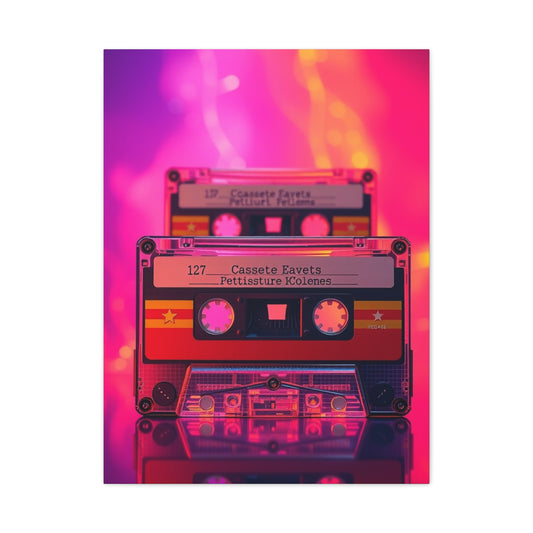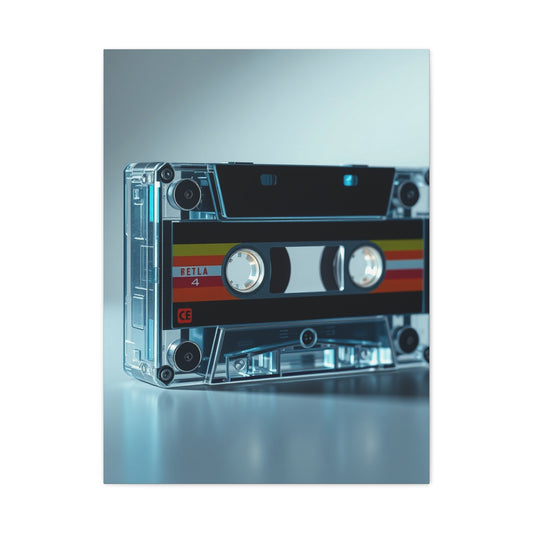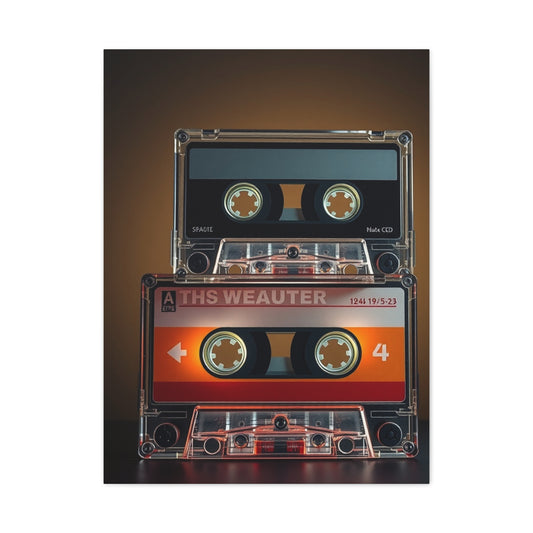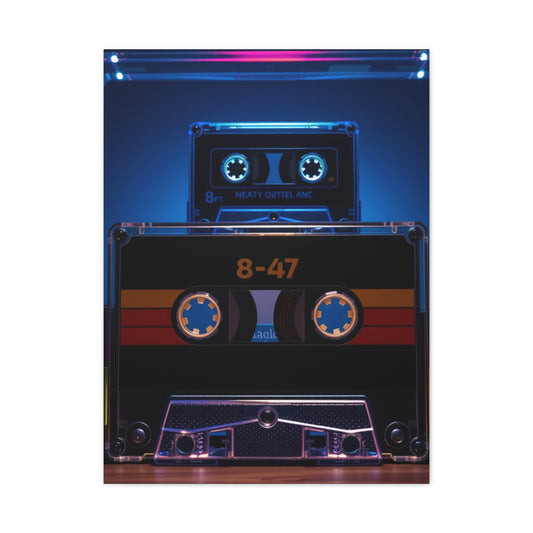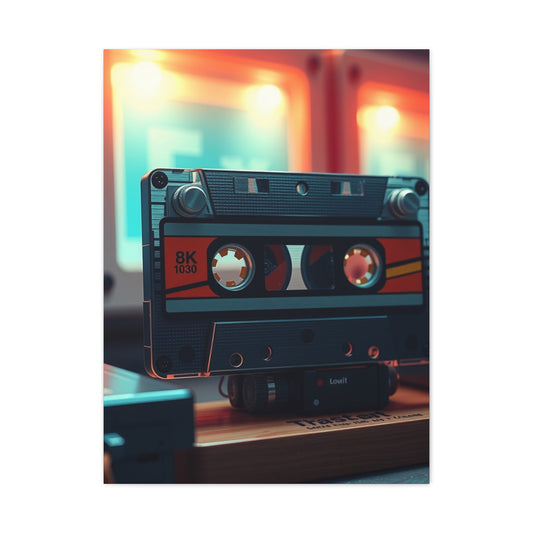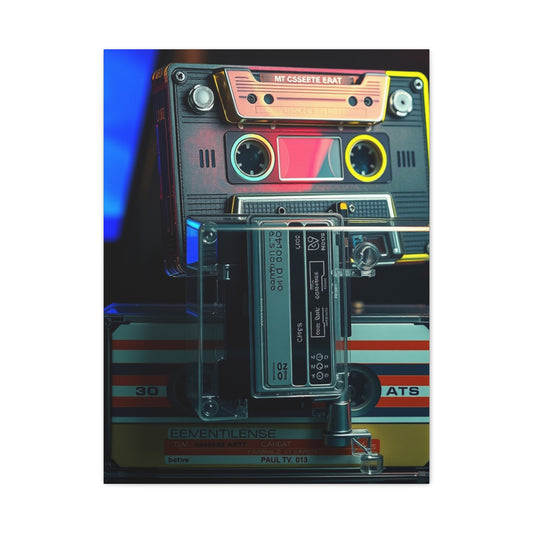Vintage Cassette Tape Wall Decor: Transform Your Space with Retro Charm
Within our increasingly digitized civilization, vintage audio cassettes have discovered an extraordinary second existence as compelling decorative elements rather than musical storage devices. This remarkable transformation represents far more than mere repurposing; it embodies a profound cultural shift toward appreciating tangible, physical artifacts that carry emotional resonance and historical significance. The practice of crafting handmade cassette tape wall installations has emerged as a sophisticated design movement that seamlessly merges nostalgic sentiment with cutting-edge interior aesthetics.
The phenomenon extends beyond simple decoration, encompassing deeper psychological connections to bygone eras when music consumption required deliberate intention and physical interaction. Unlike ephemeral digital experiences, cassette-based wall art provides permanent visual testimony to our relationship with sound, memory, and cultural identity. This artistic approach transforms mundane residential surfaces into captivating galleries that celebrate both personal history and collective musical heritage.
Contemporary homeowners increasingly gravitate toward distinctive decorative solutions that distinguish their living spaces from mass-produced uniformity. Cassette wall art satisfies this desire while simultaneously addressing environmental concerns through creative upcycling practices. The medium offers unprecedented versatility, accommodating minimalist sensibilities alongside maximalist expressions, making it suitable for diverse architectural styles and personal preferences.
Understanding the Magnetic Pull of Retro Audio Decoration
The gravitational force drawing individuals toward vintage cassette aesthetics stems from multifaceted psychological and cultural factors that transcend mere visual appeal. These compact rectangular objects represent tangible connections to formative experiences, musical discoveries, and personal milestones that shaped individual identities during crucial developmental periods. The tactile nature of cassettes contrasts sharply with intangible digital files, offering physical substance that digital alternatives cannot replicate.
Neurological research demonstrates that encountering familiar objects from our past triggers powerful emotional responses through associative memory pathways. Cassettes serve as potent mnemonic devices, instantly transporting viewers to specific moments, relationships, or life phases associated with particular songs or albums. This emotional resonance transforms ordinary wall space into deeply personal narrative landscapes that reflect individual journeys through time and sound.
The aesthetic appeal of cassettes lies partially in their inherent geometric simplicity combined with infinite customization possibilities. Their uniform dimensions create natural organizational frameworks while their varied colors, labels, and conditions offer rich textural diversity. This combination of structure and variation provides ideal foundations for sophisticated artistic compositions that maintain visual coherence while celebrating individual uniqueness.
Furthermore, cassette wall art represents rebellion against disposable consumer culture, embracing permanence and craftsmanship over convenience and obsolescence. This philosophical stance resonates strongly with environmentally conscious individuals seeking meaningful alternatives to mass-produced decorative items that lack personal significance or cultural depth.
Strategic Advantages of Handcrafted Cassette Installation Projects
Embarking upon personalized cassette wall art creation offers numerous benefits that extend far beyond conventional decorating approaches. The handmade methodology provides complete creative autonomy, enabling artists to develop highly customized solutions that perfectly align with their aesthetic visions, spatial constraints, and personal narratives. This level of customization remains impossible when purchasing pre-fabricated decorative items designed for general appeal rather than individual expression.
Environmental stewardship represents another compelling advantage of cassette upcycling projects. By diverting discarded audio equipment from landfills and transforming them into functional art pieces, creators actively participate in sustainable design practices that reduce waste while generating beauty. This ecological consciousness adds meaningful depth to decorative choices, transforming simple wall art into statements about environmental responsibility and creative resourcefulness.
Economic considerations make cassette wall art particularly attractive for budget-conscious decorators. Vintage cassettes remain readily available through secondhand markets, estate sales, thrift establishments, and personal collections at remarkably affordable prices. This accessibility enables large-scale installations without significant financial investment, making sophisticated wall art achievable for individuals regardless of economic circumstances.
The creative process itself provides therapeutic benefits through focused, meditative activity that promotes mindfulness and stress reduction. Sorting, arranging, and installing cassettes requires concentrated attention that naturally quiets mental chatter while engaging hands in purposeful work. This combination of physical activity and creative expression generates satisfaction that purely consumptive decorating approaches cannot match.
Additionally, handcrafted cassette installations possess inherent conversation-starting qualities that commercial wall art typically lacks. Visitors inevitably express curiosity about the pieces, leading to discussions about music preferences, nostalgic memories, and creative processes that deepen social connections and shared experiences.
Comprehensive Planning Strategies for Cassette Wall Art Projects
Successful cassette wall art installation requires meticulous advance planning that considers spatial dynamics, aesthetic goals, structural requirements, and long-term maintenance needs. This preparatory phase determines project success more significantly than execution techniques, making thorough planning essential for achieving satisfying results that endure over time.
The planning process begins with comprehensive space analysis that examines architectural features, lighting conditions, traffic patterns, and existing decorative elements within the target environment. Understanding these contextual factors enables informed decisions about scale, positioning, color schemes, and installation methods that complement rather than compete with surrounding design elements.
Measurement precision becomes crucial during planning phases, as even minor miscalculations can result in incomplete coverage, awkward spacing, or structural instability. Creating detailed scaled drawings helps visualize proportions and identify potential problems before beginning physical installation. These preliminary sketches serve as roadmaps during construction phases, reducing errors and ensuring efficient progress.
Budget establishment involves more than simply calculating cassette acquisition costs. Comprehensive budgeting includes adhesives, mounting hardware, protective equipment, decorative enhancements, and potential wall preparation expenses. Establishing realistic financial parameters prevents project abandonment due to unexpected costs while enabling informed material selection decisions.
Timeline development ensures project completion without rushing critical steps or experiencing prolonged disruption to daily routines. Realistic scheduling accounts for cassette collection time, design refinement periods, installation phases, and finishing touches. Adequate time allocation reduces stress while enabling careful attention to detail that distinguishes professional-quality results from hasty amateur efforts.
Selecting Optimal Wall Surfaces for Cassette Installations
Wall selection dramatically influences both installation success and long-term durability of cassette art projects. Ideal surfaces provide adequate structural support while accommodating chosen attachment methods without causing damage to underlying wall materials or cassette components. Understanding wall construction and surface characteristics enables informed decisions that prevent costly mistakes or installation failures.
Smooth, painted drywall represents the most accommodating surface for cassette installations, providing uniform texture that facilitates consistent adhesive bonding while enabling easy removal if circumstances change. These surfaces readily accept various mounting approaches, from temporary adhesive solutions to permanent mechanical fasteners, offering flexibility during installation and future modifications.
Textured surfaces present unique challenges requiring specialized approaches and careful consideration of adhesive compatibility. Heavily textured walls may require additional preparation or alternative mounting strategies to ensure adequate contact between cassettes and wall surfaces. Understanding texture patterns helps predict potential problems while informing material selection decisions.
Load-bearing capacity becomes relevant for large installations incorporating numerous cassettes or additional decorative elements. While individual cassettes weigh relatively little, cumulative weight can stress wall surfaces beyond their intended limits. Calculating total anticipated weight helps determine whether additional structural support becomes necessary.
Surface preparation requirements vary significantly based on existing wall conditions and chosen installation methods. Clean, properly prepared surfaces ensure optimal adhesive performance and reduce long-term maintenance needs. Investment in thorough preparation prevents premature failure while extending installation lifespan considerably.
Accessibility considerations affect both initial installation and ongoing maintenance activities. Walls positioned at comfortable working heights enable easier installation while facilitating routine cleaning and potential modifications. Extremely high or awkward positions may require professional assistance or specialized equipment.
Strategic Cassette Selection and Acquisition Methods
Cassette selection profoundly influences final aesthetic outcomes, making informed acquisition strategies essential for project success. Understanding various cassette types, conditions, and sources enables curated collections that support specific design objectives while maintaining cohesive visual impact throughout installations.
Color coordination represents a fundamental selection criterion that determines overall aesthetic character. Vibrant, saturated hues create energetic, playful atmospheres suitable for entertainment spaces or children's areas. Conversely, neutral tones generate sophisticated, understated elegance appropriate for professional environments or minimalist interiors. Mixed palettes offer dynamic visual interest while requiring careful balance to avoid chaotic appearances.
Shell condition varies dramatically among available cassettes, with each condition category offering distinct aesthetic advantages. Pristine examples provide clean, polished appearances ideal for formal installations, while weathered pieces contribute authentic vintage character through natural patina and wear patterns. Understanding these distinctions enables purposeful selection that supports intended design narratives.
Label artwork and text create additional visual elements that can either enhance or detract from overall compositions. Original album artwork adds authentic musical context while blank or generic labels maintain focus on pure geometric forms. Hand-written labels contribute personal character but may appear unprofessional in certain contexts. Balancing these factors requires clear aesthetic priorities and consistent selection criteria.
Size variations, while minimal among standard cassettes, can create subtle visual rhythms when carefully deployed. Incorporating occasional mini-cassettes or slightly oversized examples adds textural interest without disrupting overall geometric harmony. These variations work best as accent elements rather than dominant features.
Acquisition strategies should balance cost considerations with quality requirements while ensuring adequate quantities for planned installations. Thrift stores, estate sales, garage sales, and online marketplaces offer economical sources, though selection remains unpredictable. Music stores specializing in vintage formats provide curated selections at premium prices. Personal collections or friend donations might supply initial quantities while reducing costs significantly.
Advanced Design Conceptualization Techniques
Sophisticated cassette wall art requires thoughtful design conceptualization that extends beyond simple arrangement into comprehensive artistic vision. This creative development phase transforms basic materials into meaningful decorative statements that reflect personal aesthetics while maintaining visual coherence and emotional resonance.
Geometric pattern development provides structured foundations for cassette arrangements while offering infinite variation possibilities. Grid-based systems create orderly, contemporary appearances that complement modern architectural styles. Hexagonal or triangular patterns introduce dynamic energy while maintaining mathematical precision. Organic, flowing arrangements suggest natural rhythms and movement, softening rigid architectural elements.
Color theory application elevates random arrangements into sophisticated artistic compositions. Monochromatic schemes using various shades within single color families create elegant, unified appearances. Complementary color pairings generate vibrant contrasts that energize spaces. Analogous combinations produce harmonious, peaceful atmospheres suitable for relaxation areas. Understanding these principles enables intentional emotional manipulation through color selection.
Scale relationships determine visual impact and spatial integration success. Large installations dominate wall surfaces while creating dramatic focal points suitable for expansive spaces. Medium-sized arrangements provide balanced decoration without overwhelming surrounding elements. Small groupings function as accent pieces that complement other decorative elements rather than competing for attention.
Compositional balance ensures visual stability while preventing awkward or uncomfortable viewing experiences. Symmetrical arrangements create formal, traditional appearances that suggest order and stability. Asymmetrical compositions generate contemporary dynamism while requiring careful weight distribution to maintain harmony. Central focal points anchor compositions while providing visual rest areas.
Thematic development transforms mere decoration into narrative expression that communicates personal interests, experiences, or values. Musical genre themes celebrate specific artistic movements or personal preferences. Chronological arrangements document musical evolution over time periods. Geographic themes explore regional musical traditions or personal travel experiences. Emotional themes express moods or feelings through color and arrangement choices.
Essential Tools and Materials for Professional Results
Achieving professional-quality cassette wall art requires appropriate tools and materials selected for specific installation methods and environmental conditions. Understanding available options enables informed purchasing decisions that balance cost considerations with performance requirements while ensuring long-term installation success.
Adhesive selection represents perhaps the most critical material decision affecting both installation ease and long-term durability. Double-sided mounting tapes offer clean, removable attachment suitable for rental properties or temporary installations. High-strength construction adhesives provide permanent bonding ideal for permanent installations but risk wall damage during removal. Velcro systems enable removable installations while accommodating frequent rearrangement or seasonal modifications.
Mechanical fasteners including screws, nails, or specialty wall anchors provide maximum holding strength for heavy installations or challenging wall surfaces. These systems require precise positioning but offer unmatched reliability for long-term installations. Understanding wall construction determines appropriate fastener types and lengths for optimal performance without structural damage.
Measuring instruments ensure accurate positioning and proper spacing throughout installation processes. Steel measuring tapes provide reliable dimensional reference for large-scale projects. Precision rulers enable fine adjustment for detailed work. Laser levels guarantee horizontal and vertical alignment across extensive installations. These tools prevent cumulative errors that create unprofessional appearances.
Cutting implements may become necessary for customizing cassettes or modifying installation components. Utility knives handle tape cutting and minor trimming tasks. Fine-toothed saws accommodate structural modifications when necessary. Rotary cutters provide clean edges for label modifications or custom elements.
Safety equipment protects installers from potential hazards while ensuring comfortable working conditions. Safety glasses prevent eye injuries from flying debris or chemical splashes. Work gloves protect hands from sharp edges or adhesive contact. Dust masks filter airborne particles during cutting or sanding operations. Proper lighting reduces eye strain while enabling precise detail work.
Organizational systems maintain project efficiency while preventing material loss or confusion. Storage containers separate cassettes by color, condition, or intended use. Labeling systems track inventory and installation progress. Work surfaces provide clean, stable platforms for detailed assembly work.
Detailed Assembly Processes
Systematic assembly approaches ensure consistent, professional-quality results while minimizing errors and reducing installation time. Following established procedures prevents common mistakes while enabling efficient progress through complex installation phases that require sustained concentration and physical effort.
Surface preparation establishes foundations for successful adhesion while preventing premature failure or maintenance problems. Thorough cleaning removes dust, grease, and other contaminants that interfere with adhesive bonding. Deglossing previously painted surfaces improves adhesive compatibility while ensuring optimal holding strength. Minor repair work addresses cracks, holes, or surface irregularities that could affect installation quality.
Layout planning translates conceptual designs into precise physical arrangements that account for architectural features and spatial constraints. Creating full-scale paper templates enables accurate positioning without permanent commitment to specific arrangements. Temporary tape marks establish reference lines for systematic installation while ensuring consistent spacing throughout projects.
Progressive installation techniques maintain quality control while enabling corrections during construction phases. Center-outward installation patterns establish primary reference points while distributing visual weight evenly. Bottom-up approaches provide stable foundations for subsequent layers while preventing gravitational stress on incomplete sections. Section-by-section completion enables quality verification while maintaining manageable work segments.
Adhesive application requires careful attention to manufacturer specifications while accounting for environmental conditions and substrate characteristics. Proper coverage ensures adequate bonding while preventing excess material from creating unsightly appearances. Activation procedures follow prescribed timing for optimal performance. Pressure application techniques maximize bonding strength while preventing air bubbles or incomplete contact.
Quality control procedures identify and correct problems before they become permanent installation defects. Regular alignment verification prevents cumulative positioning errors. Adhesive bond testing ensures adequate holding strength before proceeding to subsequent sections. Visual inspection catches aesthetic problems that require immediate correction.
Final finishing techniques transform completed installations from construction projects into polished artistic presentations. Edge trimming removes excess materials while creating clean, professional appearances. Surface cleaning removes construction residue while preparing installations for long-term use. Protective treatments may enhance durability while adding desired visual effects.
Innovative Creative Variations and Artistic Themes
Expanding beyond basic arrangements into sophisticated artistic themes transforms cassette installations from simple decoration into meaningful personal expression that reflects individual creativity, cultural interests, and aesthetic sensibilities. These advanced approaches demonstrate the medium's versatility while inspiring unique solutions that distinguish personal installations from conventional decorative approaches.
Musical heritage celebrations create thematic installations that honor specific genres, artists, or historical periods through carefully curated cassette selections and strategic arrangements. Jazz-themed installations might incorporate period-appropriate color schemes, album artwork, and geometric patterns that reflect improvisational musical structures. Rock installations could emphasize bold colors, dynamic arrangements, and rebellious aesthetic choices that mirror musical energy and cultural impact.
Chronological musical journeys document personal or cultural musical evolution through systematic arrangement of cassettes representing different time periods or life phases. These installations function as visual autobiographies that trace musical taste development while celebrating formative experiences and significant relationships. Temporal arrangements might follow linear progressions or create cyclical patterns that suggest musical influences recurring throughout lifetimes.
Geographic musical exploration themes celebrate regional musical traditions, cultural heritage, or personal travel experiences through cassettes representing various global musical styles. World music installations showcase international diversity while educating viewers about different cultural expressions. Regional themes might focus on specific musical movements tied to particular geographic areas or cultural communities.
Color psychology applications use systematic color arrangements to create desired emotional atmospheres within spaces. Warm color palettes generate energetic, welcoming environments suitable for social gatherings or creative activities. Cool colors promote calm, contemplative moods appropriate for study areas or relaxation spaces. Transitional arrangements create visual journeys that guide emotional responses through space.
Interactive installation concepts enable viewer participation while maintaining artistic integrity. Modular systems allow rearrangement according to mood, season, or occasion. Magnetic backing enables easy reconfiguration while protecting wall surfaces. Rotating display methods showcase extensive collections while preventing visual monotony.
Multimedia combinations incorporate additional elements that complement cassette arrangements while expanding artistic possibilities. Integrated lighting systems highlight specific areas while creating dramatic shadow effects. Vinyl records, compact discs, or other music-related objects add scale variation while maintaining thematic coherence. Photographic elements document personal musical memories while adding narrative depth.
Integrating Cassette Art with Diverse Interior Design Styles
Successful cassette wall art integration requires understanding how these installations interact with existing architectural styles, furnishing choices, and decorative themes to create harmonious environments rather than competing elements that fragment visual coherence and spatial unity.
Contemporary minimalist environments benefit from carefully edited cassette selections that emphasize clean geometric forms over decorative details. Monochromatic color schemes maintain visual simplicity while adding textural interest through dimensional variation. Strategic spacing creates breathing room that prevents overwhelming clean-lined spaces while maintaining sophisticated restraint characteristic of minimalist aesthetics.
Industrial loft adaptations embrace cassette installations as authentic expressions of urban culture and music heritage that complement exposed brick, steel fixtures, and concrete surfaces. Black or metallic cassettes harmonize with industrial color palettes while adding human warmth to potentially harsh environments. Large-scale installations suit expansive wall surfaces typical of converted industrial spaces.
Traditional home integration requires sensitive approaches that respect established decorative themes while introducing contemporary elements that prevent stagnation. Neutral cassette colors blend seamlessly with classic color schemes while adding modern textural interest. Framed groupings provide formal presentation methods that align with traditional decorating principles while showcasing contemporary artistic sensibilities.
Bohemian eclectic interiors naturally accommodate cassette installations as additional layers within complex decorative compositions that celebrate creativity and personal expression. Vibrant colors and organic arrangements complement textile richness and cultural artifact collections characteristic of bohemian aesthetics. Mixed media approaches incorporating plants, textiles, or collected objects enhance layered visual complexity.
Scandinavian-inspired spaces emphasize natural materials, light colors, and functional beauty that cassette installations can support through thoughtful selection and arrangement. Light-colored cassettes maintain bright, airy atmospheres while natural geometric patterns reflect Nordic design principles. Sustainable upcycling practices align with Scandinavian environmental consciousness and practical design philosophy.
Mid-century modern environments provide natural settings for cassette installations that reference period audio equipment while updating vintage aesthetics for contemporary relevance. Bold geometric patterns and saturated colors reflect era-appropriate design sensibilities while cassette materials echo plastic and metal combinations typical of period industrial design.
Professional Best Practices
Achieving museum-quality installation results requires mastering professional techniques that ensure structural integrity, visual precision, and long-term durability while maintaining efficiency throughout complex projects that demand sustained concentration and physical effort over extended periods.
Wall preparation standards establish foundations for professional results through systematic surface evaluation and conditioning procedures. Structural assessment identifies potential problems including electrical wiring, plumbing, or HVAC components that could affect installation planning. Surface testing determines adhesive compatibility while revealing potential challenges requiring specialized solutions.
Precision layout methods guarantee accurate positioning while preventing costly errors that require extensive rework. Baseline establishment creates reference systems for maintaining horizontal and vertical alignment throughout large installations. Grid systems enable systematic progression while ensuring consistent spacing relationships. Centerpoint identification provides focal anchors for balanced compositions.
Adhesive application mastery ensures optimal bonding performance while preventing common failure modes that compromise installation longevity. Surface conditioning maximizes adhesive compatibility while temperature and humidity control optimize curing conditions. Proper coverage patterns ensure adequate bonding without excess material waste or unsightly appearances.
Installation sequencing optimizes workflow efficiency while maintaining quality control throughout complex projects. Strategic ordering prevents access problems while enabling systematic progress verification. Quality checkpoints identify problems requiring immediate correction before they affect subsequent installation phases. Documentation procedures track progress while enabling future reference or modification.
Professional finishing techniques distinguish amateur efforts from commercial-quality results through attention to detail and systematic completion procedures. Edge treatment removes construction evidence while creating clean, polished appearances. Surface preparation for protective treatments ensures optimal performance while maintaining aesthetic objectives. Final inspection procedures identify any remaining defects requiring correction.
Long-term maintenance planning preserves installation quality while minimizing ongoing care requirements. Cleaning schedules prevent accumulation of dust or grime that degrades appearances. Adhesive monitoring identifies potential failure points before they cause installation damage. Documentation systems track maintenance activities while enabling proactive care decisions.
Environmental Considerations and Sustainable Practices
Cassette wall art projects offer exceptional opportunities for environmental stewardship through creative upcycling practices that divert waste materials from disposal systems while creating beautiful, functional art pieces that demonstrate sustainable design principles and responsible consumption patterns.
Waste stream diversion represents the primary environmental benefit of cassette upcycling projects. Millions of obsolete cassettes accumulate in storage areas, thrift stores, and disposal facilities where they contribute to growing electronic waste problems. Transforming these discarded items into decorative art pieces prevents landfill disposal while extending product lifecycles through creative repurposing.
Material resource conservation reduces demand for new manufacturing while demonstrating circular economy principles that emphasize reuse over disposal and replacement. Each cassette incorporated into wall art installations represents avoided raw material extraction, manufacturing processes, and transportation requirements associated with new decorative products.
Energy consumption reduction occurs through upcycling activities that require minimal additional processing compared to new product manufacturing. Simple cleaning and arrangement processes consume far less energy than industrial production cycles required for conventional wall art alternatives. Local material sourcing further reduces transportation energy requirements.
Chemical emission reduction results from avoiding new product manufacturing processes that generate industrial pollutants and greenhouse gas emissions. Cassette upcycling projects require minimal chemical inputs while preventing disposal-related environmental impacts including leachate generation or incineration emissions.
Educational value demonstrates sustainable practices while inspiring others to consider creative alternatives to conventional consumption patterns. Visible installations serve as conversation starters about environmental responsibility while showcasing practical applications of waste reduction principles.
Longevity considerations maximize environmental benefits through durable installations that provide extended service lives without requiring frequent replacement or maintenance. Quality construction techniques ensure installations remain attractive and functional for decades while continuing to provide environmental benefits throughout extended lifecycles.
Advanced Lighting Integration for Enhanced Visual Impact
Sophisticated lighting integration transforms static cassette installations into dynamic visual experiences that change throughout daily cycles while highlighting specific design elements and creating atmospheric effects that enhance overall interior ambiance and artistic impact.
LED strip integration provides energy-efficient accent lighting that highlights installation edges while creating dramatic shadow effects against wall surfaces. Color-changing capabilities enable seasonal modifications or mood adjustments without physical installation changes. Low-voltage operation ensures safety while minimizing electrical requirements and installation complexity.
Backlighting techniques create floating effects that separate installations from wall surfaces while adding dimensional depth and visual drama. Even illumination distribution prevents hot spots while maintaining consistent light output across entire installations. Diffusion materials soften harsh lighting effects while creating gentle, ambient illumination.
Spotlighting applications focus attention on specific installation areas while creating dramatic contrast effects that emphasize key design elements. Adjustable fixtures enable seasonal modifications while programmable controls automate lighting changes throughout daily cycles. Color temperature selection affects mood and atmosphere while complementing existing interior lighting schemes.
Integrated control systems enable sophisticated lighting management while maintaining simple operation for daily use. Smart home integration allows voice control or automated scheduling while manual overrides accommodate special occasions or changing preferences. Energy management features optimize power consumption while extending lamp lifecycles.
Safety considerations ensure electrical installations meet code requirements while preventing fire hazards or electrical shock risks. Professional electrical work may be required for complex installations while simple systems can accommodate DIY installation approaches. Ground fault protection prevents electrical accidents in humid environments.
Maintenance access enables lamp replacement and cleaning while protecting electrical components from dust accumulation or moisture exposure. Accessible junction boxes facilitate service work while concealed wiring maintains clean appearances. Documentation systems track maintenance schedules while enabling proactive care decisions.
Specialized Techniques for Challenging Installation Environments
Certain installation environments present unique challenges requiring specialized techniques and materials that accommodate unusual conditions while maintaining installation quality and long-term performance standards that meet professional expectations.
High-humidity environments including bathrooms, kitchens, or basement areas require moisture-resistant materials and techniques that prevent adhesive failure, mold growth, or material degradation. Waterproof adhesives maintain bonding strength despite humidity fluctuations while anti-microbial treatments prevent biological growth. Ventilation considerations ensure adequate air circulation while preventing moisture accumulation.
Temperature-extreme locations including unheated areas or rooms with significant temperature variations require adhesives and mounting methods that accommodate thermal expansion and contraction cycles without failure. Flexible mounting systems prevent stress concentration while temperature-stable materials maintain dimensional accuracy throughout seasonal changes.
High-traffic areas subject to vibration or impact require reinforced mounting methods that prevent loosening or damage from normal building movement or human activity. Mechanical fasteners provide superior holding strength while protective measures prevent accidental damage from furniture movement or cleaning activities.
Textured wall surfaces including brick, stone, or heavy texture paint require specialized adhesives and mounting techniques that accommodate irregular surfaces while ensuring adequate contact and holding strength. Surface preparation may involve grinding or filling procedures while custom backing materials distribute loading evenly.
Rental property installations require completely removable systems that prevent security deposit forfeiture while enabling full installation enjoyment during occupancy periods. Temporary mounting methods must provide adequate holding strength while enabling complete removal without surface damage or residue.
Historic building installations must respect preservation requirements while accommodating modern decorative preferences. Reversible techniques prevent permanent alterations while specialized materials avoid chemical interactions that could damage historic surfaces or finishes.
Creating Modular Systems for Flexibility and Expansion
Modular installation approaches enable gradual collection development while accommodating changing preferences, spatial modifications, or expansion opportunities that maintain design coherence throughout evolving personal circumstances and aesthetic development.
Component standardization establishes consistent sizing and mounting methods that enable interchangeable elements while maintaining visual harmony throughout installations. Uniform backing systems accommodate various cassette types while maintaining consistent installation depth and alignment. Standardized spacing maintains geometric relationships while enabling systematic expansion.
Expansion planning accommodates future growth while maintaining balanced compositions throughout development phases. Modular sizing enables doubling, tripling, or other systematic expansion patterns while maintaining mathematical relationships. Balanced growth patterns prevent awkward intermediate phases while ensuring attractive appearances throughout expansion processes.
Reconfiguration capabilities enable seasonal modifications, mood changes, or space reallocation without extensive reconstruction efforts. Quick-release mounting systems facilitate rearrangement while maintaining secure holding during normal use. Storage solutions accommodate unused components while protecting them from damage during storage periods.
Documentation systems track component inventory while enabling systematic organization and retrieval procedures. Photographic records document successful arrangements while inspiring future configurations. Component identification systems prevent confusion while enabling efficient location of specific elements during reconfiguration activities.
Quality standards ensure consistent performance across all system components while maintaining professional appearances throughout various configuration options. Material specifications maintain compatibility while installation procedures ensure reliable performance regardless of specific arrangements. Maintenance procedures preserve system integrity while extending component lifecycles.
Future planning accommodates collection growth while preventing obsolescence of existing system components. Technology integration enables modern convenience while maintaining aesthetic objectives. Upgrade pathways provide improvement opportunities while protecting existing investments in time and materials.
Economic Analysis and Budget Management
Comprehensive financial planning enables successful project completion while maximizing value and minimizing unnecessary expenses throughout cassette wall art development phases. Understanding cost factors and budget management strategies ensures realistic project scoping while preventing financial overextension.Initial cost estimation includes material acquisition, tool purchases, adhesives, mounting hardware, and any required professional services while accounting for project scale and complexity factors. Accurate estimation prevents budget overruns while enabling informed decision-making about project scope and material specifications.
Value engineering identifies opportunities for cost reduction without compromising quality standards through material substitution, installation method optimization, or project scope modification. Systematic analysis balances performance requirements with budget constraints while maintaining aesthetic objectives and structural integrity.Phased implementation enables gradual investment while spreading costs across extended periods that accommodate financial constraints. Strategic phasing maintains visual appeal throughout development while enabling collection growth and installation expansion over time.
Quality standards ensure phase compatibility while preventing obsolescence of earlier work.Cost comparison analysis evaluates cassette wall art expenses against alternative decorative approaches while considering long-term value and satisfaction factors. Life-cycle costing includes maintenance, replacement, and modification expenses while environmental benefits add intangible value considerations.
Funding strategies may include material donation, collaborative purchasing, or staged acquisition approaches that reduce individual financial burden while enabling larger installations. Group purchasing leverages combined buying power while material sharing reduces individual investment requirements.Return on investment calculations consider property value enhancement, personal satisfaction, and environmental benefits while evaluating project success from multiple perspectives. Long-term value preservation maintains installation worth while upgrade potential provides future appreciation opportunities.
Advanced Design Theory and Artistic Principles
Sophisticated cassette wall art transcends simple arrangement through application of established artistic principles that create compelling visual experiences while demonstrating mastery of design fundamentals that distinguish professional-quality installations from amateur efforts.
Compositional balance distributes visual weight throughout installations while creating stable, harmonious arrangements that remain comfortable for extended viewing. Symmetrical balance provides formal stability while asymmetrical approaches generate dynamic energy that enlivens spaces. Understanding these principles enables intentional emotional manipulation through strategic placement decisions.
Color theory applications create sophisticated palettes that support desired atmospheric goals while demonstrating understanding of psychological color effects. Complementary relationships generate vibrant contrast while analogous schemes produce harmonious unity. Triadic arrangements provide balanced complexity while monochromatic approaches emphasize texture over color.
Scale relationships establish hierarchical organization while creating visual rhythms that guide viewer attention throughout installations. Large elements dominate compositions while smaller accents provide detail interest. Progressive scaling creates movement while consistent sizing maintains geometric order. Understanding these relationships enables complex compositions that remain visually coherent.
Texture variation adds tactile interest while preventing monotony in installations using similar materials. Surface differences between glossy and matte cassettes create subtle contrast while label typography provides additional textural elements. Lighting interaction with various textures generates shadow patterns that add dimensional complexity throughout daily lighting changes.
Pattern development creates systematic organization while enabling infinite variation within established frameworks. Geometric patterns provide mathematical precision while organic arrangements suggest natural growth patterns. Repetition creates rhythm while variation prevents monotony. Understanding pattern principles enables sophisticated compositions that maintain interest without becoming chaotic.
Focal point establishment directs viewer attention while creating visual anchor points that stabilize complex compositions. Strategic placement of unusual colors, orientations, or decorative elements creates emphasis while maintaining overall harmony. Multiple focal points require careful balance to prevent visual competition or confusion.
Conclusion
Vintage cassette tape wall décor has emerged as a remarkable fusion of nostalgia, artistic expression, and contemporary interior design. More than simple decoration, these installations transform ordinary walls into storytelling canvases, celebrating personal memories, cultural history, and the enduring emotional impact of music. By repurposing obsolete audio cassettes, homeowners and designers create visually captivating spaces that reflect individuality while embracing sustainable practices through upcycling.
The charm of cassette wall art lies in its ability to connect people to their past. These compact objects evoke powerful memories, recalling the tactile experience of inserting a tape, listening to favorite albums, or discovering new artists. Unlike digital music, which exists only in transient forms, cassettes provide tangible reminders of formative experiences, forging emotional connections that resonate across time. This depth of personal meaning transforms a wall into more than decoration—it becomes a narrative space that captures the stories of its occupants.
Beyond emotional resonance, cassette installations offer unmatched versatility in design. Their uniform shape and size provide a natural framework for geometric arrangements, while variations in color, label design, and condition allow for endless creative expression. Homeowners can craft minimalist, monochromatic grids for understated elegance or vibrant, eclectic patterns for dynamic, playful environments. Whether integrated into contemporary lofts, bohemian studios, or mid-century modern interiors, cassette art complements a wide range of architectural styles and decorative themes, enhancing both aesthetic appeal and spatial identity.
Moreover, the creation process itself delivers unique benefits. Sourcing, arranging, and installing cassettes encourages mindfulness and focused creativity, allowing individuals to engage in a hands-on, meditative activity. The modular nature of cassette installations also offers flexibility, enabling rearrangement, expansion, or seasonal customization without requiring extensive reconstruction. This adaptability ensures that installations remain fresh and visually engaging over time.
Sustainability is another core advantage. By upcycling discarded cassettes, creators divert waste from landfills, reduce resource consumption, and demonstrate a commitment to environmentally responsible design. Integrating these recycled materials into functional art merges eco-consciousness with aesthetic sophistication, reinforcing the value of thoughtful, purposeful decoration.
In essence, vintage cassette tape wall décor is a multidimensional design solution that combines emotional depth, creative freedom, sustainability, and aesthetic versatility. It transforms walls into compelling visual statements that celebrate music, memory, and personal identity, while inspiring conversation and admiration. For anyone seeking to infuse a space with retro charm, individuality, and meaningful artistry, cassette wall art offers a timeless, captivating, and environmentally conscious solution that bridges past and present with lasting impact.

